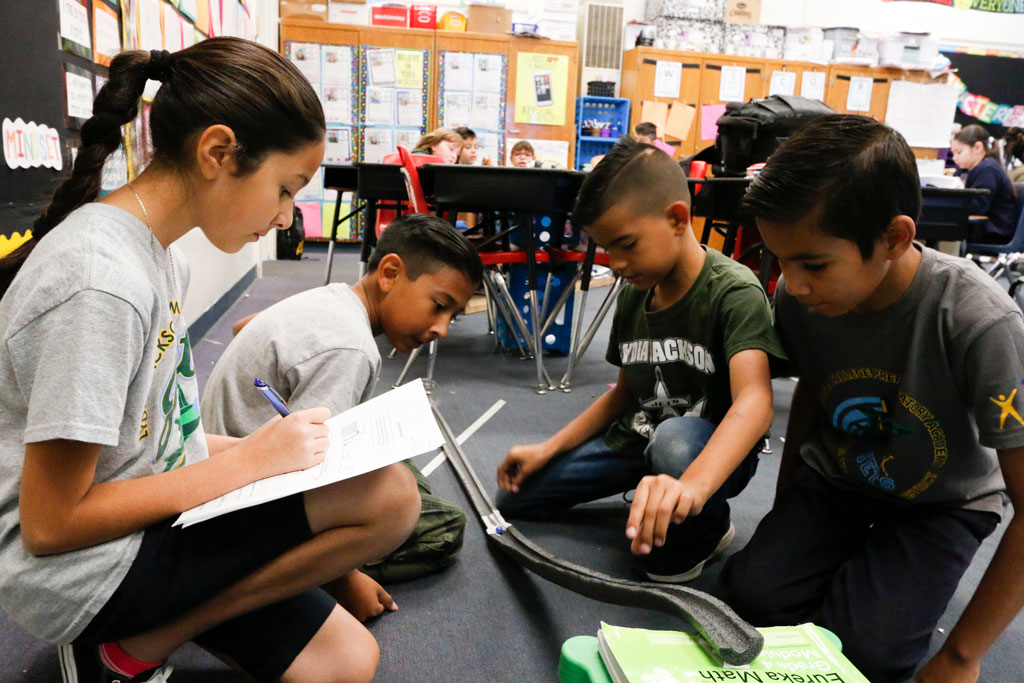National Hispanic Heritage Month can be a time for local educational agencies to dedicate time and effort specifically to engaging with Latinx families, but it can also be a launching off point to establish a culturally affirming school culture year-round.
Californians Together Executive Director Martha Hernandez said that while National Hispanic Heritage Month — which lasts from Sept. 15 to Oct. 15 — is an excellent time to explore the history and culture of Latinx people. As with other themed months such as Pride or Black History Month, however, it’s important not to isolate the exploration of Latinx history and culture into one month during the year, but instead to integrate it authentically into the curriculum throughout the school year.
“For school board members, it’s at the policy level — having these policies and these practices and then providing the resources and the professional development about all of the different cultures that exist in the school,” Hernandez said. “We’re talking about school climates and campuses that are affirming, inclusive and safe. [That means] that the school doesn’t tolerate comments that are anti-bilingual or anti-immigrant or racist, and that the teachers can intervene with positive messages, and that there are student clubs and activities encouraging the development of biliteracy, et cetera.”
LEAs should consider exploring Principle One of California’s English Learner Roadmap policy, which discusses the importance of strong family partnership as part of assets-oriented perspectives, and includes a guidance document with resources and illustrative examples of practice, Hernandez said.
The notion of having an assets-based lens towards students is a large component of the San Diego County Office of Education’s professional learning sessions for educators, said the county’s Senior Director of Equity, Fabiola Bagula.
“We believe that we have the responsibility to see the gifts in each and every one of our students and that we can help project a beautiful future for our students given that we see them clearly,” Bagula said. “For example, being bilingual is an asset, yet many times we hold a deficit lens on the remedial English coursework that must be given. What would happen if we all understood and believed that cultivating a second language is powerful?”
The county uses the Yosso’s Community Cultural Wealth model in order to frame the linguistic gifts of Hispanic students in this way and help educators understand the wealth of cultural gifts among the Latinx community. And as a service-oriented organization, Bagula said the COE has used student and family input to craft lessons and strategies to “cultivate the joy in positive representation and provide ample learning sessions for the county’s 42 school districts. [Students] have expressed that belonging is an important component towards positive impact and we have discussed what ‘belonging’ looks like and sounds like at our schools,” he continued.
Additional steps toward fully embracing youth
Discussing critical issues both past and present, highlighting historical and local, everyday people who have played important roles in the Latinx community, encouraging biliteracy programs and delivering instruction that is culturally responsive and incorporates and builds upon a child’s home language are just some of the ways in which LEAs can engage youth and their families on a deeper level during National Hispanic Heritage Month, Hernandez said. Even discussing why this time was chosen for the month of celebration — several countries from Mexico to South America have Independence Days on or near Sept. 15 — can lead to important reflection.
Including literature in the curriculum that reflects students’ identities and experiences can also be beneficial, Hernandez said. Programs such as Supporting Immigrant and Refugee Students includes literature-based lessons that really engage students in terms of trauma that they may have felt and introduce concepts like resilience.
Using literature-based lessons is a good idea because “sometimes students cannot express what they’re thinking or what they’re feeling, but if someone is reading a book about someone who’s experiencing that same sense of separation, for example, that they can talk about the characters in the book, and in that way express what they’re feeling,” she continued.
Having books in the library and curriculum in the classroom where the students see themselves reflected as well as materials that are authentic and free of stereotyping can help create the conditions where the children can draw upon their own culture and feel respected and that it’s safe to participate. At the district level, mission and vision statements can specifically embrace linguistic and cultural diversity.
“It’s also great to have educational events and celebrations not just during Hispanic Heritage Month, but regularly, that embrace and feature students’ cultural and language communities, or regular cultural arts activities showcasing the cultures of the school community,” Hernandez said. “We really want our students to feel pride and knowledge and a sense of identity about their own culture and language.”
Californians Together has developed an English Learner Roadmap Toolkit series targeting teachers and administrators providing guidance in implementing the core aspects of the Roadmap.





